Welcome to your holiday in a hospital – where Ayurvedic science, milk baths and an on-hand astrologer can be combined with purging and blood-letting, and even the massage tables have been blessed.
Cleopatra was a massive fan of them, apparently. Milk baths, that is – the process of being submerged in hot milk for around half an hour, the aim of which was to bring suppleness to the skin, remove toxins and preserve beauty. But even the Egyptian Queen was late to the party. Her reign was between 51-30 BC, whereas Ayurvedic science, an early promoter of drenching oneself in dairy, goes back to 5000 BC.
For a modern version, you can head to health-resort-meets-hospital Kairali, The Ayurvedic Healing Village, nestled amongst the palm groves and shimmering rice paddies of Kerala, in Southern India. Kairali’s version involves lying prone on a ‘dhroni’ – a kanjiram wood table (the wood is important, as even this has medicinal properties and has been blessed before it’s been cut) as two therapists, wearing saris that look too glamorous to be uniform, pour 4 litres of very-hot-but-not-too-hot cow’s milk over you. The cow’s milk is also infused with herbs, grasses and spices such as turmeric, ramacham and muthamga. It’s sluiced over your skin like a creamy, warm waterfall, then drains into grooves in the table where it becomes imbued with more medicinal magic from the kanjiram wood, thus returning to the pot so the drenching can begin all over again. The effect is nothing short of feeling like one of the gods that grace the many temples in this part of the world.

A typical treatment room, where even the wood that makes the treatment tables has been blessed.
Of course, it’s not all milk and honey (or jaggery syrup, as this is the substitute used here at Kairali, which determines to provide the most natural, sugar-free and wholesome diet possible). Some days you will be basted with oil to within an inch of your life so you fairy slip off the table, glistening and naked like a buttered seal, and would shoot out of the window if the well-practiced therapists did not gently yet firmly advise you ‘slowly, slowly…’. Still, the massage that accompanies the greasing is incredibly enjoyable – but remember, this is all before we’ve got onto the leaches and puking.
This is admittedly an extreme form of therapy, and Kairali’s signature and most famed treatment: Panchakarma, with Pancha meaning ‘five’ and karma’ meaning ‘process’. One of the oldest forms of Ayurvedic therapy, Pachkarma is a combination of five therapies that work to detoxify the body and balance the three ‘doshas’ – Vata, Pitta and Kapha – that are the source of our energy and life force, and make up our constitution.
The process involves being prepared in advance via more relaxing treatments such as these massages, as well as ‘Sirodhara’ (where oil is dripped gradually onto your forehead, and if you don’t slip into sleep then you must be superhuman), and ‘Kizhi’, where specially selected medicinal herbs, powders and oils are wrapped into little bundles and used as poultices, applied to different areas of the body with various pressure.
Only then do you begin the five-step-programme, and each of these individual treatments requires the space of a few days in between to allow the body to regain strength. It’s also important to note there is no ‘set regime’ for Panchakarma. The term ‘holistic’ means to treat the whole essence of what makes up a person, rather than just the disease, and since everyone is completely unique then it follows that each course of treatment is also designed specifically for the individual.

Kerala is the birth place of Ayurveda, making this the ideal location for the retreat.
You might begin with Vamanam, the method of unblocking mucus via ‘emisis therapy’. The day before involves eating plenty of battered foods to ignite the kapha dosha – but don’t get too attached. It’s all going to come up the next day when you start the treatment and drink so much milk you’re full to the brim (anywhere between 2-3 litres of warm diluted cow’s milk!) and then, in the final glass, a herbal medicine is also included. Cue a lot of vomiting that not only cleanses your system but also requires plenty of exertion from your body. Unsurprisingly, you need to be relatively fit and well to embark on this treatment, and it’s used for upper body kapha disorders, including psychopathic, bronchial and respiratory issues.
Aasthaapana is an enema that treats diseases of the colon, where a concoction including rock salt, jaggery syrup, ghee, oil and medicinal herbs is administered to the abdomen via the anal passage, and then there’s purgation. This is the Virechanam treatment, where laxatives are used to clear the intestines and bowel since everything is released over the course of a few hours.
Raktamokshana is the bit with the leaches. Also known as ‘blood-letting’, this has been popular for generations, not just in India. A vampiric little creature is placed on your body and gets to work cleaning out the ‘bad blood’, removing toxins, and improving circulation. When he’s had his fill he simply falls off in an obese mass of haemoglobin. You can create a similar effect with a scalpel, but let’s say leaches are slightly more… natural?

Part of the treatment centre, incorporating natural materials and historic artworks.
Panchakarma is an example of ‘Shodana Chikitsa’, where both the disease and the cause are treated. Ayurveda, it is worth mentioning, translates to The Science of Life. One of the predominant thrusts of Ayurvedic treatment is that it will not simply provide relief from aches, pains and illness – it also aims to uncover the root source of where this malady is stemming from. Whereas I have certainly had experience in Western medicine of ‘pill-popping’ culture and ‘try taking this for that’ remedies (GP clinics being, in my opinion, murky ground for this), an Ayurvedic doctor will work to establish why your body is out of whack in the first place. Perhaps your Kapha Prakruti is too high, and that’s why you struggle to get out of bed on a Monday morning? Shodana Chikitsa will bring balance to the doshas, as well as strengthen the Dhatu (which gives the body structure) and ensure the Mala (toxins) are cleared.
To properly experience this intense wellness regime, you’d need to stay for around 21 to 30 days, costing between £2500-£3500 in all. Do this though, and it’s thought you’ll be right as rain for the rest of the year, having rid yourself of toxins, bad humours and irregularities of the body that can cause fever, inflammation, and all the other irritating bodily let-downs. Feeling above-par for 335 days a year seems worth a date with the leaches and toilet bowl in my opinion.

The soothing interiors incorporate the owner’s styles and tastes, with a stream flowing in front of each cottage.
Kairali Ayurvedic Healing Village itself is a dazzling emerald set in the crown of India known as ‘God’s Own Country’, the sunny Southern state of Kerala. The resort occupies 60 acers, although you’d not realise it from the winding, shaded pathways and secluded groves in which the dwellings sit. This does include rice paddies though (Kairali is as self-sustained as possible, also using their own coconut groves, an on-site herb garden, freshly grown vegetables and the like), and so there’s not a sense of sprawling majesty about the place – instead, it’s a treasure map to be explored at will, getting lost amongst the birdsong and suddenly happening upon a light-drenched glade where you can rest awhile in a hammock, gently swaying to the sound of rustling palm leaves, or you may discover the azure gape of the swimming pool tucked next to the tennis courts. There is also a distinct lack of mosquitos due to the fish in the stream and the special paint used on the trees, plus the unique ecology of the area means it’s 5 degrees cooler within the shady retreat.
The self-contained one-story dwellings are as unique as the wellness regimes prescribed, all designed in a different style. A blue-trimmed house has latticed windows like a country cottage found in the Cotswolds. One residence looks like the top of a knight in a chess game played by giants, albeit painted custard yellow. A maroon villa has a wide balcony and two throne-like chairs ideal for gazing across the gardens. Each dwelling has a conch shell inside to absorb negative energy, and the stream that flows through the resort also works to dispel the bad vibes and carry them away downstream where, presumably, they’re ejected into the ether and their negative influences are nullified. Amidst all of this, Butterflies trace delicate, haphazard patterns through the warm air.

One of the stunning villas inspired by famed architect Laurie Baker.
So, what does a stay at Kairali actually entail? And do you have to spend a whole 6 hours vomiting up your Ayurvedic dinner from the previous day?
The answer is no, if you don’t care for that kind of therapy. Kairali is designed to provide the optimum experience possible, whatever ‘wellness’ and ‘recuperation’ means to you. There are a myriad reasons for heading to Kairali – maybe you’re suffering from a specific ailment, or simply want to protect your body from future illness. It could be an approach to weight loss or a way to treat anxiety or stress.
Not only are there resident doctors, nurses and therapists, but there’s another enlightened being shimmering between the palms – that is, an on-site yoga instructor who will guide you through yoga in the morning and meditation in the evening. Been a while since you cracked out the crow pose? Not sure your downward dog is desirable? This isn’t the kind of ‘yoga’ you might be used to seeing the Lulu Lemon crew embarking upon. Each morning is a chance for reconnection, recalibration and realignment, and this comes as a result of concentrating on the breath.
Yoga comes from the Sanskrit word ‘Yuj’, which means ‘union’ – to join. In fact, it tallies nicely with the English word ‘yoke’, the contraption that attaches the cart to the horse. The horse is the muscle, the power, while the cart contains the precious goods. In this way, we can see ‘yoga’ as being the connection between our physical body and the wealth of spiritual potential in our mind and soul. The ‘flexibility’ side of things is just one of the limbs of yoga, and at Kairali you’ll also learn the importance of focus, flow and finding a sense of inner connection, while also waking your body up nicely with some morning movement. What’s more, the early morning yoga and evening meditation take place in the beautiful new pavilion nestled within the coconut groves, with tall windows to give the sensation of being immersed in nature without the inconvenience of being bitten by mosquitos while making the most of savasana.

A typical lunch at Kairali
What you put into your body is just as important as what you expose it to at Kairali, and a large part of Ayurveda wellness is ascribed to the food we eat. Every dish at the retreat follows a ‘farm-to-table’ ethos and is entirely vegetarian and organic. A typical breakfast might be cubes of juicy papaya and glistening, garnet-hued pomegranate seeds followed by fluffy discs of idli with sambar on the side, and a glass of fresh coconut water to wash it down with. Lunch and dinner consist of a starter and soup – maybe steamed broccoli or a raw pepper salad and a vegetable broth, and then a trio of treats such as beetroot salad, vegetable curry and wholesome dahl, accompanied by pearls of red rice and dosa. Don’t think you’ll have to skip the sweet stuff either, as each meal is concluded with a little dessert of some description, such as apple soaked in jaggery syrup with cinnamon, coconut flakes and raisins. The result is that guests never feel hungry, but there is also a clear awareness that what you’re consuming is wholesome, nutrient-rich food. And, as with everything else at Kairali, a specific diet will be set for you depending on your body’s requirements.
This is, in fact, the crux of Kairali, and a huge factor in why it’s continually voted one of the best health retreats in the world. Everything is tailored to the needs of the individual. Your body is not a reproduction of someone else’s, so why should your treatment be? The results speak for themselves: guests return again and again, confident in Kairali’s ability to return them to a state of balance and vitality. Ayurveda may be one of the oldest medical sciences known to man, but it’s easy to see how it still caters to the needs of modern man. Kairali Ayurvedic Healing Village effortlessly bridges that gap, elevating healing to an art form that we can all benefit from.


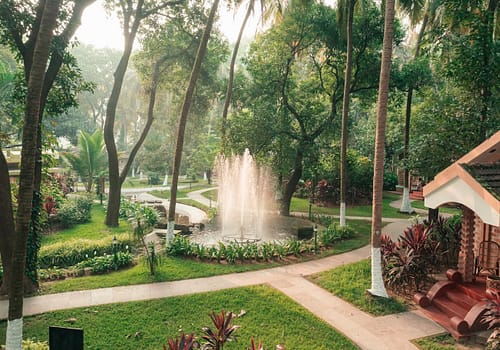
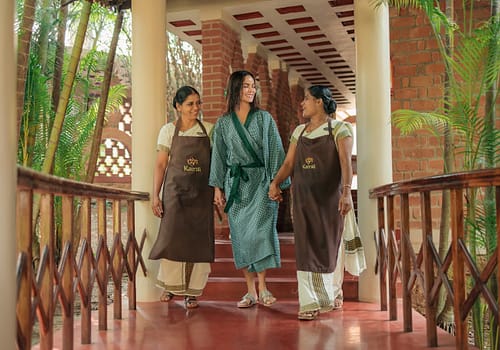
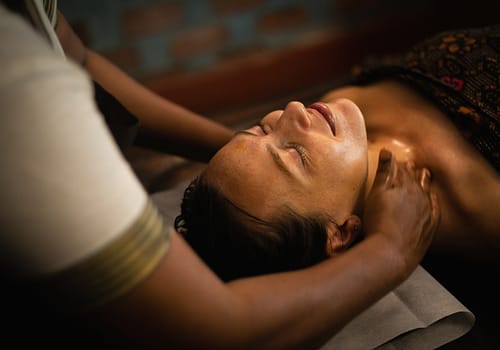
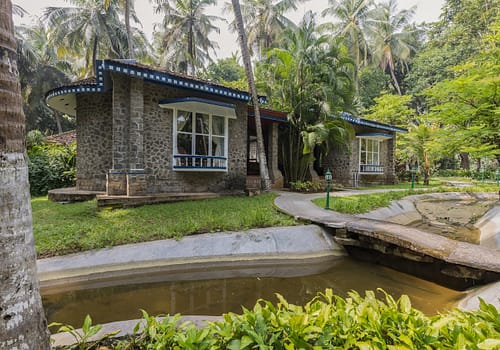
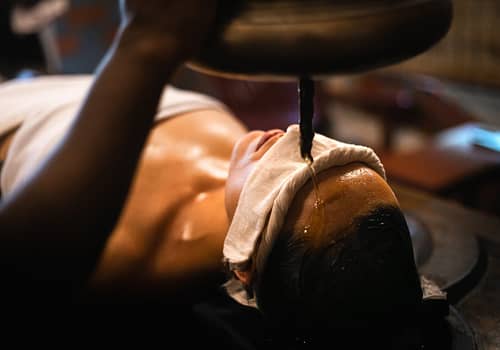
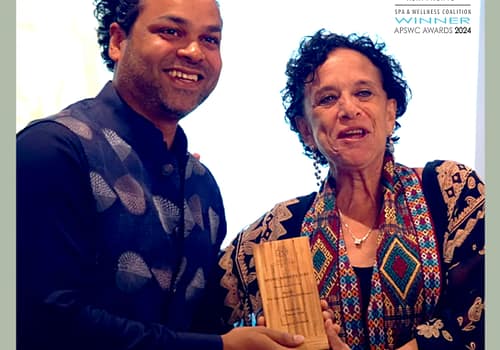







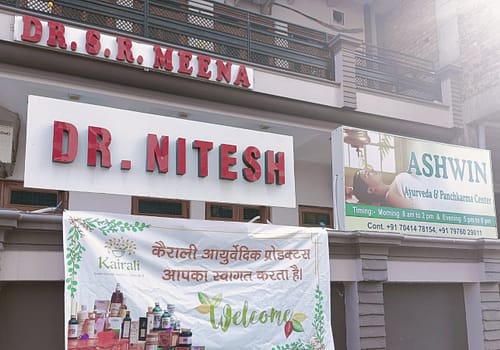
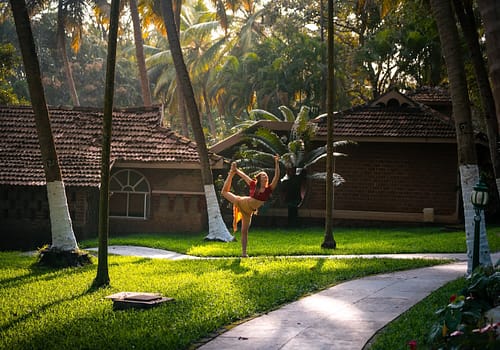














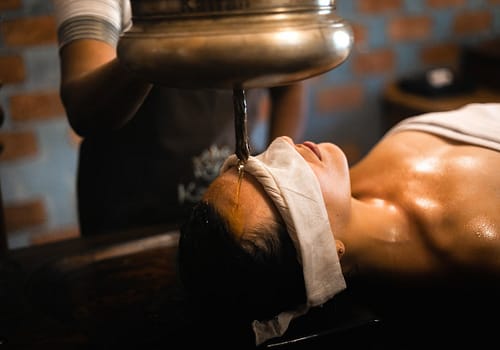












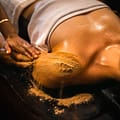

Leave a Reply